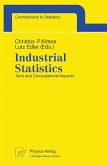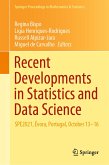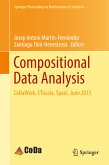Walter T. Federer
Statistical Design and Analysis for Intercropping Experiments (eBook, PDF)
Volume 1: Two Crops
40,95 €
40,95 €
inkl. MwSt.
Sofort per Download lieferbar

20 °P sammeln
40,95 €
Als Download kaufen

40,95 €
inkl. MwSt.
Sofort per Download lieferbar

20 °P sammeln
Jetzt verschenken
Alle Infos zum eBook verschenken
40,95 €
inkl. MwSt.
Sofort per Download lieferbar
Alle Infos zum eBook verschenken

20 °P sammeln
Walter T. Federer
Statistical Design and Analysis for Intercropping Experiments (eBook, PDF)
Volume 1: Two Crops
- Format: PDF
- Merkliste
- Auf die Merkliste
- Bewerten Bewerten
- Teilen
- Produkt teilen
- Produkterinnerung
- Produkterinnerung

Bitte loggen Sie sich zunächst in Ihr Kundenkonto ein oder registrieren Sie sich bei
bücher.de, um das eBook-Abo tolino select nutzen zu können.
Hier können Sie sich einloggen
Hier können Sie sich einloggen
Sie sind bereits eingeloggt. Klicken Sie auf 2. tolino select Abo, um fortzufahren.

Bitte loggen Sie sich zunächst in Ihr Kundenkonto ein oder registrieren Sie sich bei bücher.de, um das eBook-Abo tolino select nutzen zu können.
This textbook provides a comprehensive survey of design and analysis of experiments for intercropping experiments. Its main themes are that techniques such as relative indices make it possible to cover a wide variety of conditions, and that statistical models for density-yield relations enable recommendations to be made to growers of crops.
- Geräte: PC
- ohne Kopierschutz
- eBook Hilfe
- Größe: 23.39MB
Andere Kunden interessierten sich auch für
![Statistical Design and Analysis for Intercropping Experiments (eBook, PDF) Statistical Design and Analysis for Intercropping Experiments (eBook, PDF)]() Walter T. FedererStatistical Design and Analysis for Intercropping Experiments (eBook, PDF)40,95 €
Walter T. FedererStatistical Design and Analysis for Intercropping Experiments (eBook, PDF)40,95 €![Statistical Analysis of Designed Experiments, Third Edition (eBook, PDF) Statistical Analysis of Designed Experiments, Third Edition (eBook, PDF)]() Helge ToutenburgStatistical Analysis of Designed Experiments, Third Edition (eBook, PDF)112,95 €
Helge ToutenburgStatistical Analysis of Designed Experiments, Third Edition (eBook, PDF)112,95 €![Industrial Statistics (eBook, PDF) Industrial Statistics (eBook, PDF)]() Industrial Statistics (eBook, PDF)40,95 €
Industrial Statistics (eBook, PDF)40,95 €![New Perspectives in Statistical Modeling and Data Analysis (eBook, PDF) New Perspectives in Statistical Modeling and Data Analysis (eBook, PDF)]() New Perspectives in Statistical Modeling and Data Analysis (eBook, PDF)80,95 €
New Perspectives in Statistical Modeling and Data Analysis (eBook, PDF)80,95 €![Recent Developments in Statistics and Data Science (eBook, PDF) Recent Developments in Statistics and Data Science (eBook, PDF)]() Recent Developments in Statistics and Data Science (eBook, PDF)175,95 €
Recent Developments in Statistics and Data Science (eBook, PDF)175,95 €![Compositional Data Analysis (eBook, PDF) Compositional Data Analysis (eBook, PDF)]() Compositional Data Analysis (eBook, PDF)112,95 €
Compositional Data Analysis (eBook, PDF)112,95 €![Statistical Modelling (eBook, PDF) Statistical Modelling (eBook, PDF)]() Statistical Modelling (eBook, PDF)72,95 €
Statistical Modelling (eBook, PDF)72,95 €-
-
-
This textbook provides a comprehensive survey of design and analysis of experiments for intercropping experiments. Its main themes are that techniques such as relative indices make it possible to cover a wide variety of conditions, and that statistical models for density-yield relations enable recommendations to be made to growers of crops.
Dieser Download kann aus rechtlichen Gründen nur mit Rechnungsadresse in A, B, BG, CY, CZ, D, DK, EW, E, FIN, F, GR, HR, H, IRL, I, LT, L, LR, M, NL, PL, P, R, S, SLO, SK ausgeliefert werden.
Produktdetails
- Produktdetails
- Verlag: Springer US
- Seitenzahl: 298
- Erscheinungstermin: 6. Dezember 2012
- Englisch
- ISBN-13: 9781461393054
- Artikelnr.: 44179741
- Verlag: Springer US
- Seitenzahl: 298
- Erscheinungstermin: 6. Dezember 2012
- Englisch
- ISBN-13: 9781461393054
- Artikelnr.: 44179741
- Herstellerkennzeichnung Die Herstellerinformationen sind derzeit nicht verfügbar.
Intercropping is an important technique in increasing agricultural productivity. This book will be an important reference to agricultural researchers and the statisticians who help them plan experiments.
1 Introduction and Definitions.- 1.1. Introduction and Objectives.- 1.2. Statistical Design.- 1.3. Types of Treatment.- 1.4. Treatment Designs in Category 4 for Intercropping Experiments.- 1.5. Some Statistical Problems Associated with Response Model Equations, Statistical Analyses, and Inferences.- 1.6. Some Concepts and Definitions.- 1.7. Literature Cited.- 2 One Main Crop Grown with a Supplementary Crop.- 2.1. Objectives and Introduction.- 2.2. Some Examples of Main Crops Grown with a Supplemental Crop.- 2.3. Statistical Designs and Univariate Analyses of Main Crop Yields for Experiments on Main and Supplemental Crops.- 2.4. Some Additional Statistical Analyses for Yields of Main Crop Intercropped with a Supplemental Crop.- 2.5. Multivariate Analyses for a Main Crop Grown with Supplemental Crops and Grown as a Sole Crop.- 2.6. Summary and Discussion.- 2.7. Problems.- 2.8. Literature Cited.- 3 Both Crops Main Crops-Density Constant-Analyses for Each Crop Separately.- 3.1. Objectives and Introduction.- 3.2. Treatment and Experiment Designs.- 3.3. Univariate Analyses on Observed Variables for Each of the Two Main Crops.- 3.4. Multivariate Analyses on a Vector of Observed Variables of One Crop.- 3.5. Summary and Discussion.- 3.6. Problems.- 3.7. Literature Cited.- 4 Both Crops Main Crops-Density Constant-Combined Crop Responses.- 4.1. Objectives and Introduction.- 4.2. Univariate Analyses on Functions of Combined Variables of Both Crops.- 4.3. Land Equivalent Ratio or Relative Yield Total.- 4.4. Multivariate Analysis on an Observation Vector of the Intercropping Systems.- 4.5. Effect of Varying Proportions on Created Functions.- 4.6. Summary and Discussion.- 4.7. Problems.- 4.8. Literature Cited.- Appendix 4.1.- 5 Both Crops of Major Interest with VaryingDensities.- 5.1. Objectives and Introduction.- 5.2. Treatment Design and Statistical Analysis for Comparisons Among Density Combinations for Individual Crop Responses.- 5.3. Statistical Analyses for Responses from Both Crops for a Single Pair of Crops at Varying Densities.- 5.4. Models and Analyses for Monocultures and Mixtures of Two Crops over a Range of Densities.- 5.5. Analyses for c1 Lines of Crop 1 and c2 Lines of Crop 2.- 5.6. Summary and Discussion.- 5.7. Problems.- 5.8. Literature Cited.- Appendix 5.1. Derivation of Parameter Estimates and Their Variances Using a Generalized Least Squares Method for the Linear Model of Section 5.4 (Prepared by Anila Wijesinha).- Appendix 5.2. Distribution of Estimators and Hypothesis Tests (Prepared by Anila Wijesinha).- 6 Monocultures and Their Pairwise Combinations when Responses Are Available for Each Member of the Combination.- 6.1. Introduction.- 6.2. Treatment Design.- 6.3. A Response Model and Some Statistical Analyses.- 6.4. Summary and Discussion.- 6.5. Problems.- 6.6. Literature Cited.- Appendix 6.1.- Appendix 6.2.- 7 Monocultures and Their Pairwise Combinations when Separate Crop Responses Are Not Available.- 7.1. Introduction.- 7.2. Treatment Designs.- 7.3. Response Model Equations and Some Statistical Analyses.- 7.4. Response Models for a Crop Competition Experiment.- 7.5. Summary and Discussion.- 7.6. Problems.- 7.7. Literature Cited.- Appendix 7.1. Derivation of Solutions for Response Model for Design 3.- Appendix 7.2. Derivation of Solutions and Variances for Model 4, Example 7.5.- 8 Spatial and Density Arrangements.- 8.1. Introduction.- 8.2. Spatial Arrangements-Density Constant.- 8.3. Spatial Arrangements-Density Variable.- 8.4. Statistical Analyses for the Arrangements in Section 8.3.- 8.5. Summary andDiscussion.- 8.6. Problems.- 8.7. Literature Cited.- 9 Some Analytical Variations for Intercropping Studies.- 9.1. Introduction.- 9.2. Replacement Series.- 9.3. Other Indices.- 9.4. Linear Programming.- 9.5. Summary and Discussion.- 9.6. Problems.- 9.7. Literature Cited.- 10 Experiment Designs for Intercropping Experiments.- 10.1. Introduction.- 10.2. Principles of Design of Experiments.- 10.3. Zero-Way Elimination of Heterogeneity.- 10.4. One-Way Elimination of Heterogeneity.- 10.5. Two-Way Elimination of Heterogeneity.- 10.6. Split Plot and Split Block Designs.- 10.7. More Complex Experiment Designs.- 10.8. Plot Technique.- 10.9. Stability Concepts and Parsimonious Experiment Design.- 10.10. Problems.- 10.11. Literature Cited.
1 Introduction and Definitions.- 1.1. Introduction and Objectives.- 1.2. Statistical Design.- 1.3. Types of Treatment.- 1.4. Treatment Designs in Category 4 for Intercropping Experiments.- 1.5. Some Statistical Problems Associated with Response Model Equations, Statistical Analyses, and Inferences.- 1.6. Some Concepts and Definitions.- 1.7. Literature Cited.- 2 One Main Crop Grown with a Supplementary Crop.- 2.1. Objectives and Introduction.- 2.2. Some Examples of Main Crops Grown with a Supplemental Crop.- 2.3. Statistical Designs and Univariate Analyses of Main Crop Yields for Experiments on Main and Supplemental Crops.- 2.4. Some Additional Statistical Analyses for Yields of Main Crop Intercropped with a Supplemental Crop.- 2.5. Multivariate Analyses for a Main Crop Grown with Supplemental Crops and Grown as a Sole Crop.- 2.6. Summary and Discussion.- 2.7. Problems.- 2.8. Literature Cited.- 3 Both Crops Main Crops-Density Constant-Analyses for Each Crop Separately.- 3.1. Objectives and Introduction.- 3.2. Treatment and Experiment Designs.- 3.3. Univariate Analyses on Observed Variables for Each of the Two Main Crops.- 3.4. Multivariate Analyses on a Vector of Observed Variables of One Crop.- 3.5. Summary and Discussion.- 3.6. Problems.- 3.7. Literature Cited.- 4 Both Crops Main Crops-Density Constant-Combined Crop Responses.- 4.1. Objectives and Introduction.- 4.2. Univariate Analyses on Functions of Combined Variables of Both Crops.- 4.3. Land Equivalent Ratio or Relative Yield Total.- 4.4. Multivariate Analysis on an Observation Vector of the Intercropping Systems.- 4.5. Effect of Varying Proportions on Created Functions.- 4.6. Summary and Discussion.- 4.7. Problems.- 4.8. Literature Cited.- Appendix 4.1.- 5 Both Crops of Major Interest with VaryingDensities.- 5.1. Objectives and Introduction.- 5.2. Treatment Design and Statistical Analysis for Comparisons Among Density Combinations for Individual Crop Responses.- 5.3. Statistical Analyses for Responses from Both Crops for a Single Pair of Crops at Varying Densities.- 5.4. Models and Analyses for Monocultures and Mixtures of Two Crops over a Range of Densities.- 5.5. Analyses for c1 Lines of Crop 1 and c2 Lines of Crop 2.- 5.6. Summary and Discussion.- 5.7. Problems.- 5.8. Literature Cited.- Appendix 5.1. Derivation of Parameter Estimates and Their Variances Using a Generalized Least Squares Method for the Linear Model of Section 5.4 (Prepared by Anila Wijesinha).- Appendix 5.2. Distribution of Estimators and Hypothesis Tests (Prepared by Anila Wijesinha).- 6 Monocultures and Their Pairwise Combinations when Responses Are Available for Each Member of the Combination.- 6.1. Introduction.- 6.2. Treatment Design.- 6.3. A Response Model and Some Statistical Analyses.- 6.4. Summary and Discussion.- 6.5. Problems.- 6.6. Literature Cited.- Appendix 6.1.- Appendix 6.2.- 7 Monocultures and Their Pairwise Combinations when Separate Crop Responses Are Not Available.- 7.1. Introduction.- 7.2. Treatment Designs.- 7.3. Response Model Equations and Some Statistical Analyses.- 7.4. Response Models for a Crop Competition Experiment.- 7.5. Summary and Discussion.- 7.6. Problems.- 7.7. Literature Cited.- Appendix 7.1. Derivation of Solutions for Response Model for Design 3.- Appendix 7.2. Derivation of Solutions and Variances for Model 4, Example 7.5.- 8 Spatial and Density Arrangements.- 8.1. Introduction.- 8.2. Spatial Arrangements-Density Constant.- 8.3. Spatial Arrangements-Density Variable.- 8.4. Statistical Analyses for the Arrangements in Section 8.3.- 8.5. Summary andDiscussion.- 8.6. Problems.- 8.7. Literature Cited.- 9 Some Analytical Variations for Intercropping Studies.- 9.1. Introduction.- 9.2. Replacement Series.- 9.3. Other Indices.- 9.4. Linear Programming.- 9.5. Summary and Discussion.- 9.6. Problems.- 9.7. Literature Cited.- 10 Experiment Designs for Intercropping Experiments.- 10.1. Introduction.- 10.2. Principles of Design of Experiments.- 10.3. Zero-Way Elimination of Heterogeneity.- 10.4. One-Way Elimination of Heterogeneity.- 10.5. Two-Way Elimination of Heterogeneity.- 10.6. Split Plot and Split Block Designs.- 10.7. More Complex Experiment Designs.- 10.8. Plot Technique.- 10.9. Stability Concepts and Parsimonious Experiment Design.- 10.10. Problems.- 10.11. Literature Cited.







